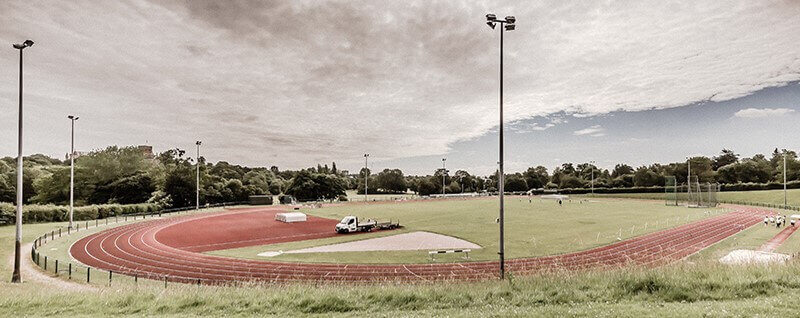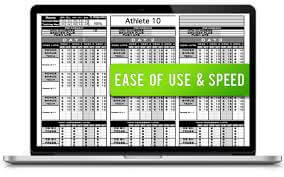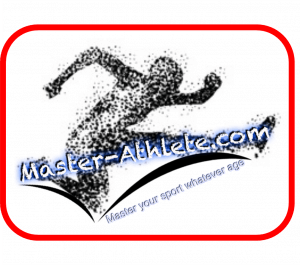As another season ends and we plan our next cycle of training, I am looking at my athletes with fresh eyes on their general movement competencies to see if any have picked up some bad habits or even general inhibitions that may hamper or limit the end goals we set.
Personally I know I have a lot of movement disfunction picked up over the years and is something I personally will be working on with some vigour as I try to retain my 400m Title in Toronto next year, which at the top of the age group is going to be very difficult I know. But I need to assess and work on my own soil before I start planting the Training Seeds.
“If you ain’t assessing’, you’re just guessing’!”
I cannot remember who I first heard this from, but I find it absolutely true. I’ve discovered that I’m a “fixer” by nature. Sometimes so much to a fault, I’m always re-evaluating things I come across daily to find ways to make them better. It could be my effectiveness and approach in dealing with a difficult challenge, my performance-training approach, or my guitar playing.
Just as in life, in athletic and functional performance if we aren’t checking to see where we currently are as compared to where we’ve been, how clear is our path to get to where we want to be. Yes, as performance coaches or rehab professionals we could just put everyone through a cookie-cutter program. How effective is that approach towards promoting client accountability, getting positive outcomes, and justifying the quality of service we provide? On the flip-side, if you are someone who is going through a fitness program, it’s important to reinforce your hard work and dedication by noting changes over time. Assess, then progress (or regress) as indicated.
Over the years I’ve learned through mentorship , self-development, and trial/error quite a few assessment and evaluation techniques for a multitude of measurable variables. In this blog, I’m going to share 10 easily-reproducible functional evaluation and/or athletic performance 
Performance Monitoring Tests
- Subjective/Objective Self-Assessment (Questionnaire, Body Measurements): Some sort of non-complex questionnaire is very helpful here. As a coach, the better your rapport is with your clients the more accurate and honest their responses will most likely be. Questions should include topics such as self-ratings on current mindset, satisfaction with current/previous program, attainment of personal goals, and expression of both valued components of their program as well as areas they feel need to be enhanced. To compliment this questionnaire, a simple height, weight, body fat %, and body measurements assessment is great for monitoring progress as well.
- Posture Assessment: Make note of certain objective observations pertaining to posture. How does normal standing and sitting position look (neck, upper back, and lower back position/curves)? Is there near-symmetry right vs left? Does one or both shoulder blades wing up when raising arms overhead or when pushing off of a wall? What is the observed foot and knee position in standing? A quick scan from head to toe can tell you a whole lot.
- Functional Movement Screen/Biomechanical Analysis: The Functional Movement Screen (FMS), developed by Gray Cook and his team of athletic training/physical therapy gurus, is a “screening tool used to identify limitations or asymmetries in seven fundamental movement patterns that are key to functional movement quality in individuals with no current pain complaint or known musculo-skeletal injury (www.functionalmovement.com).” The purpose of this screen is to identify weak links, notable asymmetries, and faulty biomechanics – all of which can lead to increased risk of injury, decreased functional efficiency, and potentially decreased performance. This helps to direct corrective exercise prescription. The great thing about the FMS is that it is easily reproducible and demonstrates very high validity in consistency between the testers. To delve into movement analysis even deeper, there are some awesome video analysis tools out there which allow coaches to video-record and analyze sport-specific movements, running/jumping technique, and functional patterns in slow motion. This gives the opportunity to not only address inefficiencies noted in the movement, but also to provide visual sensory feedback to the person on the video (since we can neurocognitively process feedback we see much faster, with better retention, than when we only hear it). Pretty awesome stuff!
(via www.fit-pro.com) - Single-leg squat: While the FMS lets you screen squat and lunge patterns, one thing left out is strength and control in a single leg squat pattern. I’ve found that many times people can have a very good 2-legged squat, yet when you put them on 1 leg and have them try to squat, breakdowns occur in the kinetic chain. Problems such as knee valgus (buckling/rotating inward ) and heel rise/foot shift can indicate high risk of knee and ankle injury. I also see direct correlation between poor eccentric control of this motion and less than ideal deceleration quality in agilities. This shows you any asymmetries between sides which may need to be addressed. I usually have the person perform 3-5 reps on a 12″ high step.
- Vertical Jump Tests – Double Vertical Jump (DVJ) for technique, Vertical Jump (VJ) for height: There are multiple purposes for using the DVJ or VJ tests. In addition to measuring lower extremity explosive power (how high you can jump), you can also objectively note the quality of take off, landing, and reversal rate of power. Vertical jump height can be tested with a jump tower, using a force mat (such as the Just-Jump System that we have at O-PA! Performance Academy), or simply touching as high as you can on a wall. I love the VJ test – my scores weren’t too shabby back in the day. Maybe my goal should be to get back that 37″ vertical jump – I just need 6″ more!
- Med Ball Chest Pass: Using a weighted ball, it’s easy to assess upper body power, measuring how far the ball can be pushed away from you like a basketball pass. A simple, reproducible test, I recommend performing seated or kneeling to eliminate compensation coming from the legs. The actual weight of the ball should be such that the test taker can move it at least somewhat fast. It probably goes without saying, but make sure to use the same weight consistently every time you re-test for accurate results.
- Acceleration and Agility testing: 10-Meter Sprint, Spider Test, & 5-10-5 Pro Agility: The purpose of these tests is to demonstrate an athlete’s acceleration, quickness, and ability to change direction efficiently. With any agility or quickness test, the total time to complete should be very short, aiming for no longer than 5-15″ (go longer than 30″ at most and you are no longer testing the phosphogen energy system – or the “burst”). The 10 yard acceleration test is pretty self-explanatory – time it takes to run 10 yards straight ahead. The Spider Agility test as described by the NSCA involves running a timed star pattern (returning to the centre after going to each point). I like to use 3 to 5 yard distances between cones with 8 cones, and have also toyed with versions involving drop steps and shuffles (the person has to face forward the entire test) to demonstrate actual game-like quickness over a variety of functional skills (like when playing defence). The 5-10-5 Pro Agility is the same test used by the NFL at their draft combine. It too is a very reliable tool to assess quickness, acceleration, change of direction quality, and lateral stability.
5-10-5 Pro Agility Test - Push-up/Pull-up Challenge: It is what it sounds like. How many quality push- ups and/or pull-ups can you do in a certain amount of time. Note that if someone cannot perform a full pull-up unassisted, this test can be performed using assisted pull-ups with a superband or tubing. It’s all relative when comparing pre- to post-test numbers, as long as testing means is consistent. Typically the allotted time is 3 minutes or less. This is a great way to measure overall muscular endurance.
- Core Endurance testing (plank, side plank R & L, prone double leg raise): Ah yes, that dreaded “PLANK”. Everyone loves to perform these tests with me – said no one ever. Well, OK, some people enjoy them. The tests are simple: hold a static neutral core position as long as you can until goal is reached, failure, or loss of proper form (I use >1 coaching correction needed). Four positions are used: plank on forearms, side plank on forearm on each side, and a prone double leg raise to horizontal off of a table/bench. These tests are based off of the thorough research of Dr. Stuart McGill, one of the world’s leading researchers on core stability and issues concerning the back. Based on his research, a healthy individual should be able to hold these for a minimum of 60″, ideally 90″. Measurements such as this correspond with significantly lower likelihood of back pain. He also noted that there should be within 5% symmetry when comparing all 4 sides. Note: make sure to allow for recovery between each test. I use a 1:1 work:rest ratio between tests, with the minimum rest being 1 minute. That’s even between side-plank sides.
- Sprint Endurance Testing: With sprint endurance testing, we are measuring both speed and the ability to maintain that speed for between 30 and 90 seconds (dependent on the level of athlete). Good examples of this would be a timed 300 meter run or a shuttle run with a minimum distance of 15 to 20 yards between reversals. Because of the added time it takes to complete, sprint endurance testing (or anaerobic endurance testing) assesses a different energy system within the body compared to short sprints and agility tests. Yes, even adults should work on improving their sprinting when possible. It’s an amazing total body calorie roaster and a powerful neuromuscular stimulus. Keep in mind, you need to progress your sprint training wisely to avoid injury.
Food for your mind: 10 tests for measuring athletic and/or functional performance, in both the athlete and those who would not consider themselves athletes. Because improvements can sometimes occur very quickly when guided by the correct coaching, these assessments do not always have to take place during an official testing session. Great performance coaches have a keen eye for assessing these tests and patterns on the fly during training sessions as well. In athletes, these are the findings that show you how far you’ve come and what you need to work on to get to the next level. In the latter, they are great tools for determining injury risk, proper progression of your fitness routine, and for reinforcing a sense of personal accomplishment! *Insert High Five!*
“If you ain’t assessing’, you’re just guessing’!”
This article was provided by the brilliant podcast guys over at The Catalyzing Podcast and was produced by Ryan Stevens. Go check the original article and more right HERE





